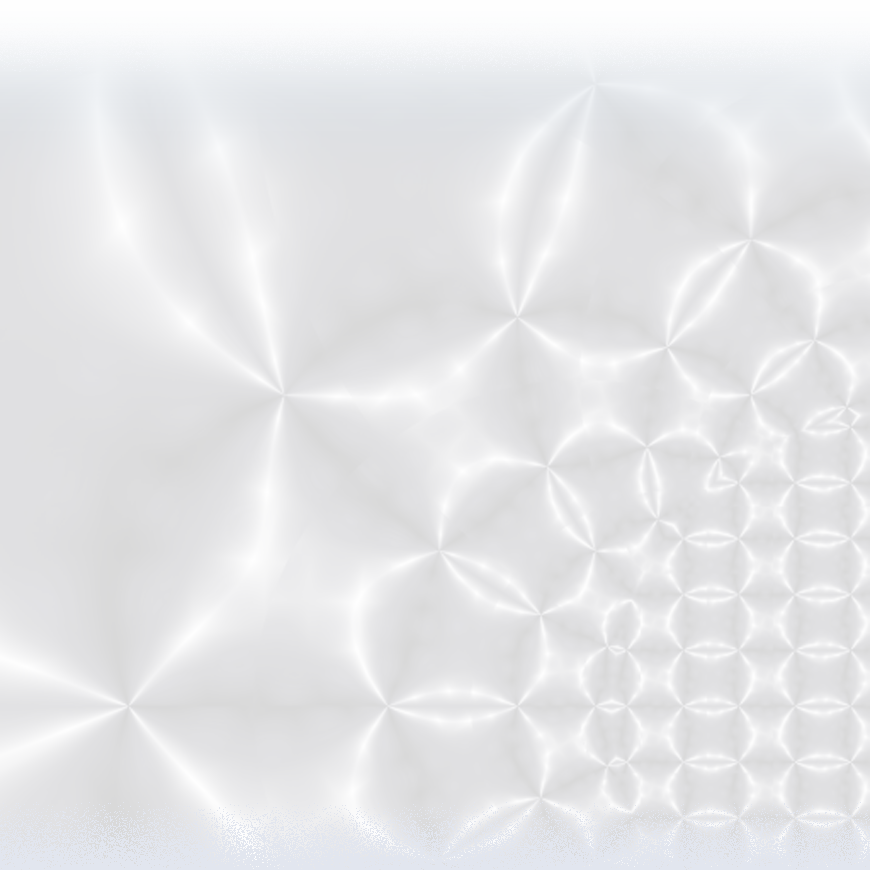Artments:
Musings on art.
Basics – Why Art?
[None of this is new. But we forget - or become tangled - and reminders can be useful.]
There is a line of thought (of which the expositions last century by Simone Weil and Iris Murdoch are as good as any) which holds that one shows love for any person or thing - up to and including “the whole world” - by looking at it carefully, by “paying” attention (the choice of verb is significant). This might be further refined by adding the word “sustained”; we have all seen people pay unwelcome attention for malevolent ends, but this usually stops as soon as those ends are met, hence is countered by the word “sustained”.
Looking carefully enough and long enough (which nobody at all in fact does) would presumably lead to a thorough understanding of everybody; apparent wickednesses or disagreements would disappear. One might even understand those people who airily assume that looking and seeing are easy; cf John Major in the nineties appeasing his hanging-and-flogging followers by saying about criminals “you can understand too much, you know!” (really, Mr M? Where’s it being done?)
Looking is in fact hard, and one of the reasons for this is, that there are many different, intersecting frameworks through which things can be viewed, yet we tend to pick a small number of comfortable ones and stick with them. Frequently the first step in unravelling a stupidity is the examination of the framework in which it’s being seen; in the majority of disagreements, people are simply talking about different things on wholly unconnected planes, though ostensibly under the same word. The irritation one feels at yet another tins-on-shelves manager reducing things to “what can be counted” stems not from the counting, which may be right as far as it goes, but from the utter unintelligence of his assumption that the one miserable little framework he’s managed to encompass in his miniscule life is all that is and all that can be.
So looking (perceiving, examining) is the primary human activity by which we may grow; and art is a major - possibly the primary - means of doing this.
Art is not about making things pretty, certainly not about “passing the time”. It is not a distraction, or some sort of luxury. There are many, many ways of doing art, but they all finally come down to: looking, perceiving, exploring.
The process is immediately subject to human limitations, the “rhythm of things going dead”. We are incapable of sustaining any activity for very long; the very fact of doing whatever-it-is changes it with time, however short that time is. You like marzipan? here is marzipan; now here is more marzipan; and still more. Oh, you’ve had enough marzipan? You aren’t enjoying it so much now? But let some time pass, you’ll enjoy it again.
Humans are subject to all kinds of simultaneous cycles of this kind, unsynchronised and unpredictable. The outcome is this: the result of any meeting between a person and something presented to them (another person, a situation, a thing, a piece of art) is wholly dependent on who they are that day or that moment, ie on the combined state of their conflicting personal cycles.
This is why there are no absolute values (or if there are, they are irrelevant). It’s no good saying “this piece of music is absolutely good, so you will inevitably enjoy it always”; it may be absolutely good, but it doesn’t matter much because the outcome of the meeting will depend on who you are at the moment of encounter. I love Bach; but there are days when I do not need to listen to Bach - and this reflects badly neither on Bach nor myself, it’s just How It Is.
This applies even more to an audience; if the results of your work on one person are unpredictable, how much more so on a roomful of people?! And that collectivity will also generate its own sub-dynamic; which accounts for why on some evenings “it just doesn’t work” and on others it feels as if the whole audience had been together lifted up into the sky, though the performances may not in themselves have differed very much.
Just as this principle applies from day to day, so it applies across your entire life; it may take years before some artistic territory becomes (as they say) “relevant” to you, may be years before you need it. There is music that meant nothing to me for years; every so often I’d give it another listen, to see if anything had changed, and eventually it usually had (this can go down as well as up, obviously; you can outgrow things).
And of course that vicious exploiter of human frailty, the in-group, the club or tribe, has a field-day in the arts. Mention a piece by Mozart and what happens? One club immediately tries to neutralise it by turning the whole thing into a polite tea-party; another tribe builds prestigious careers on telling us what our Proper Response should be; another, reacting against the tea-party crowd, recasts it as a symbol of class bullying and lathers itself into a frenzy. Properly apprehended, there’s nothing polite about a piece by Mozart, it’s capable of blowing your head off; but don’t worry, you just go on making it into a tea-party or a symbol of bourgeois oppression, you’ll be nice and safe like that and won’t have to hear a thing! Working through all these egoistic hijackings is of course the very first layer of looking, a preliminary to the real stuff further down; but this is already quite hard enough to constitute a major (and wholly self-imposed) barrier which many never get through. Unfortunately like everything else, all art can be misused; that’s the first term in the series “looking”. But let’s move on.
There are a number of words conventionally used about art which I rather dislike; one of them is the word “communication”, and it may now be possible to begin to see why.
The word “communication” has been reduced - unfairly - to the standard Shannon information-theory model: a message from a sender to a receiver, sent via an information channel. Most people who talk about art as “communication” are by now using it roughly in this sense. “Art may be considered as a message from a sender to a receiver” - how much student writing have I seen which starts thus! Now it should be obvious that, whilst something like this is vaguely happening, it’s happening in the context of something much larger; we need (and don’t have) another word signifying this larger thing of which “communication” is merely a part. Whilst there are “messages” in art, they are happening in a context which involves the state of the “receiver”, and on multiple interacting levels; there is no simple unitary outcome which could be considered “the” message and no possibility of one, because the totality of the outcome depends on the state of the receiver and anyway it’s all taking place in a vast number of dimensions. It would be better to postulate the whole situation as a matrix of possibilities for action, for response. Note that the Shannon model takes no account of receiver interaction (feedback), but regards variations in the receiver as noise or malfunction (very reasonably, because basically he was talking about telephones).
And then: what scale are we working on?
The basic unit of art is: the Move, as in a dance step; where has it gone now? Where now? Or: ah, it’s carefully not going anywhere - why? (but that too is a move, or anti-move - which comes to the same thing). Moves in art happen at all levels, but the lowest (micro-) moves always determine the character of the larger moves further up, which may be deliberate gestures but also may be unconscious statistical accumulations, or both. If something has gone wrong in your piece of work, it usually pays to examine the other levels to see if you can spot what hasn’t been thought (lived) through sufficiently.
Note that there is no level where moves can be considered “atomic”, or irreducible; there are always more levels in all directions, they simply cease to be of practical - that is, manipulative - use at a certain point.
You can if you like regard the smallest visible moves as “messages”, because they involve the least choices; musically this would be on the “note-to-note” or “pulse-to-pulse” level. We are on this note; what will the next be? Ah, that shift with that flavour - so that establishes a flavour between two notes. But many more will soon follow, and the total effect depends on all of them and on the way each interacts with who you are at the moment it happens - and there will be other moves happening in other instruments or sounds, and different blocks of the piece build up different aggregate effects depending how you are listening, which will be a function of who you were when it started and what you’ve become since then... any attempt to process it all on a “message” level will not get you far. You can of course take the message as some great lumbering crude overall symbol, but then you’ll have certainly regressed to the egoistic first level described above and you won’t be hearing anything much at all.
I mentioned earlier the situation of different ideas struggling under the same word, and “message” is a good example; as well as the clean scientific Information-Theory implications, it also suggests “meanings”; a message is a meaning. This also is a minefield.
A little thought shows that this shift doesn’t actually change very much. The aggregated flavours of the Moves suggest analogues to the outside world. The flavour of this musical leap, this energy deployment, is an analogue of some other energy deployment. There is no linear transfer; you cannot make a translation table saying “this always means this”. But neither is it so vague that you can make whatever analogues you like out of it (though a vast academic-critical industry has recently flourished by saying exactly this. But if it’s anything at all, folks, then it’s nothing at all; go out and look at the sky instead!)
So: “meaning” is a difficult word for the same reason that “communication” is a difficult word, ie because we’re dealing with complex multi-layered interactions, not with something simple and unitary. These words simply aren’t happening on enough levels at once, and therefore quickly become misleading. It’s not that they’re wrong but that they simply aren’t big enough; we need larger words that include them.
An even more problematic term is “expression”; or worse, “self-expression”.
“Expression” conventionally means “getting something inside to be outside”, largely in the context of bodily secretions: nursing mothers are said to “express” milk. In artistic terms though, we appear to be applying the word and the process to personal feelings, mostly limbic in origin (the famous quote states that the limbic system is responsible for “the four Fs - fighting, fleeing, feeding and reproduction”). So in being asked to “express” myself, I am essentially being asked to exhibit the contents of my stomach in public. It is unclear to me why this would benefit anybody at all.
No-one is interested in the contents of my, or your, or anyone’s stomachs (unless they are suffering from some grave and unusual psychiatric condition). It doesn’t matter whether I, or you, are miserable because our Significant Other Done Gone; singing about it has no value to anybody else unless it has been suitably distanced into a form which relates to their significant other having done gone. In terms of feelings, emotions, we are all utterly selfish. “Oh yes, you’re having a bad time aren’t you, terrible isn’t it, oh dear dear dear, never mind” and we turn back to nursing our own far more important bundle of suffering. So saying through your little piece of art “I feel…THIS!” (with hand suitably applied to forehead) is of no consequence; no-one cares. But saying “here, look at this that I’ve placed in the sky, it’s a picture of what happens to all of us and if you look you’ll find yourself in there too!” works, even manages to turn that selfishness to advantage in getting us to look.
And it doesn’t matter whether we’re talking on the level of the Gone that’s been Done by Significant Others, or on the level of “oh my god, the universe is frighteningly large and I’m going to die one day!”, it works just the same way. So “expression” doesn’t come into it anywhere at all, and filling people’s heads full of stuff about the desirability of self-expression is just a hiding to nowhere and severely (almost criminally) misleading. Just say what you have to say; any “you” that might be involved will doubtless come along for the ride, whatever you suppose yourself to be doing.
To finish, I’d like to return to the idea I mentioned earlier, that art is not a pastime. An important notion lurks behind this, which we are now in a position to examine.
As we know, there is a positive and negative version of absolutely everything. With our old friend Zen Buddhism, for instance, there are on the one hand monks spending their whole lives in carefully trying to get out from under their own feet with a view to possible enlightenment; and on the other there are people who imagine that you can just stroll into this state by adopting the label - but both are covered by the term “Zen” as far as the public are concerned, both “serious” Zen and what one might call “California Zen”.
Now if we consider the business of looking as carefully as possible at the world via our art, we notice that there is an exactly opposite activity which uses precisely the same tools and techniques and is often mistaken for it. This activity consists in seeing as little as possible, in blotting everything out as far as you can, in getting rid of time as fast as you can; causing time to pass without being used, literally “passing time”, filling up the time till you’re dead. We need a word for this, and there isn’t one specifically designated, so I’m going to use the word “entertainment”, not ideal but it’ll have to do.
Note: this has nothing to do with the amount of fun and enjoyment going on. I’m quite happy if my bits of art are entertaining and enjoyable. But I’ll have no truck with the notion of “filling up the time till you’re dead”; I’d like people to be looking harder at what goes past them, not less hard. How will we move on, how will the world move on, if we blot it out? That were to play into the hands of sharks and tricksters and evil forces.
Speaking of the advertising industry, some interesting light is shed by the above on the periodic attempts by that industry to position itself as “art”. I recall Dennis Hopper lending his presence to an entire film on this theme; it was very convincing as long as you were prepared to consider the matter purely from a technical angle. As with entertainment, advertising uses all the repertoire of artistic techniques and tricks, often very cleverly. But underneath, just like the under-painting in a Renaissance picture which sets a tone even when not directly seen, beneath all the cleverness and (potential) interest of the advert’s surface murmurs incessantly the same banal, whining, miserable little message: “We’d like your money. We’d like your money. We’d like your money…”. Art, finally, is meant to give you something. Advertising, finally, is meant to take something away. There is no possible reconciliation between these positions.
Something similar applies to “entertainment”. But human bungling rides to the rescue here; often it is difficult to separate the strands of “looking hard” and “filling up the time till you’re dead” which may coexist in a piece of work. It can even happen that something intended solely as cynical entertainment benefitting only the ego and bank balance of the perpetrator may actually get used by someone as a way of looking harder, because their personal cycles decreed that they happened to need it that day.
And of course, all these activities will happen anyway, regardless of the words we use. I’m not suggesting some sort of tedious, “worthy” programme. Whether or not they imagine themselves to be engaged in examining the world, people will go on making interesting things and by that means examining it willy nilly, whatever they suppose themselves to be doing. And the blotters-out will continue to blot out.
We don’t know very much. There are no philosophical “systems”, just rules-of-thumb offered with more or less honesty. This collection of rules-of-thumb will nearly deputise for a system, in that it will give some sort of answer about most artistic things when they’re laid alongside it. Better than that I’m afraid I can’t manage. But rules of thumb are at least a start.
*******************************************************



